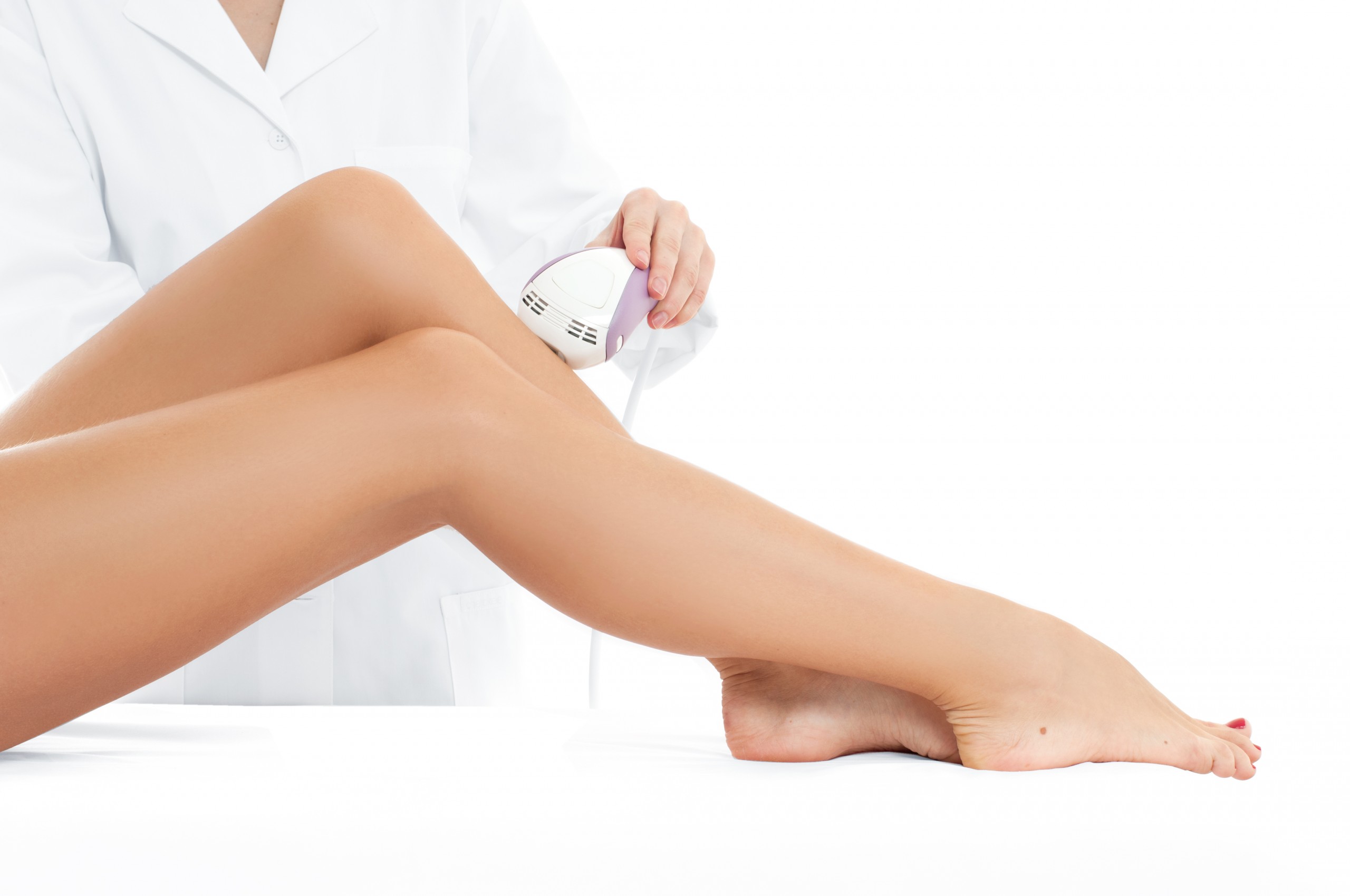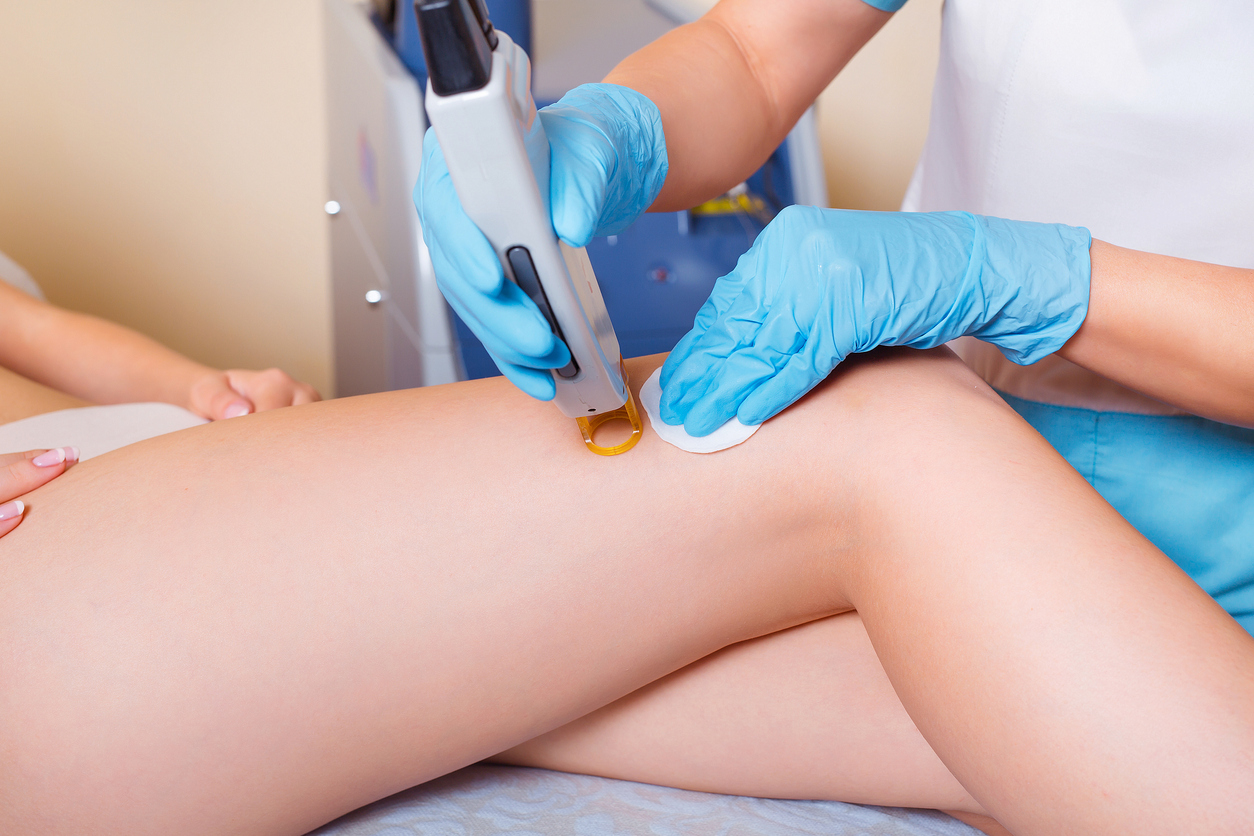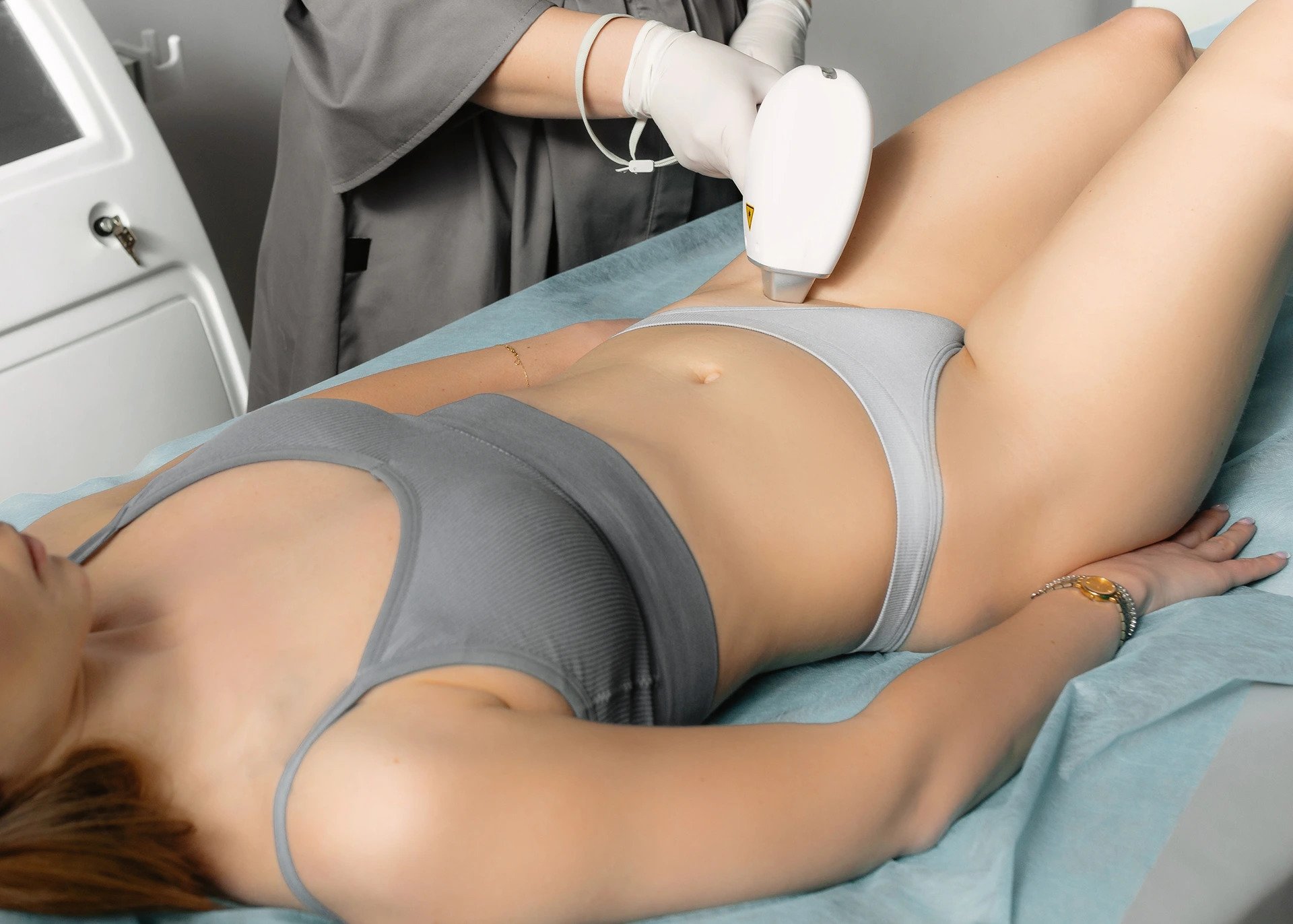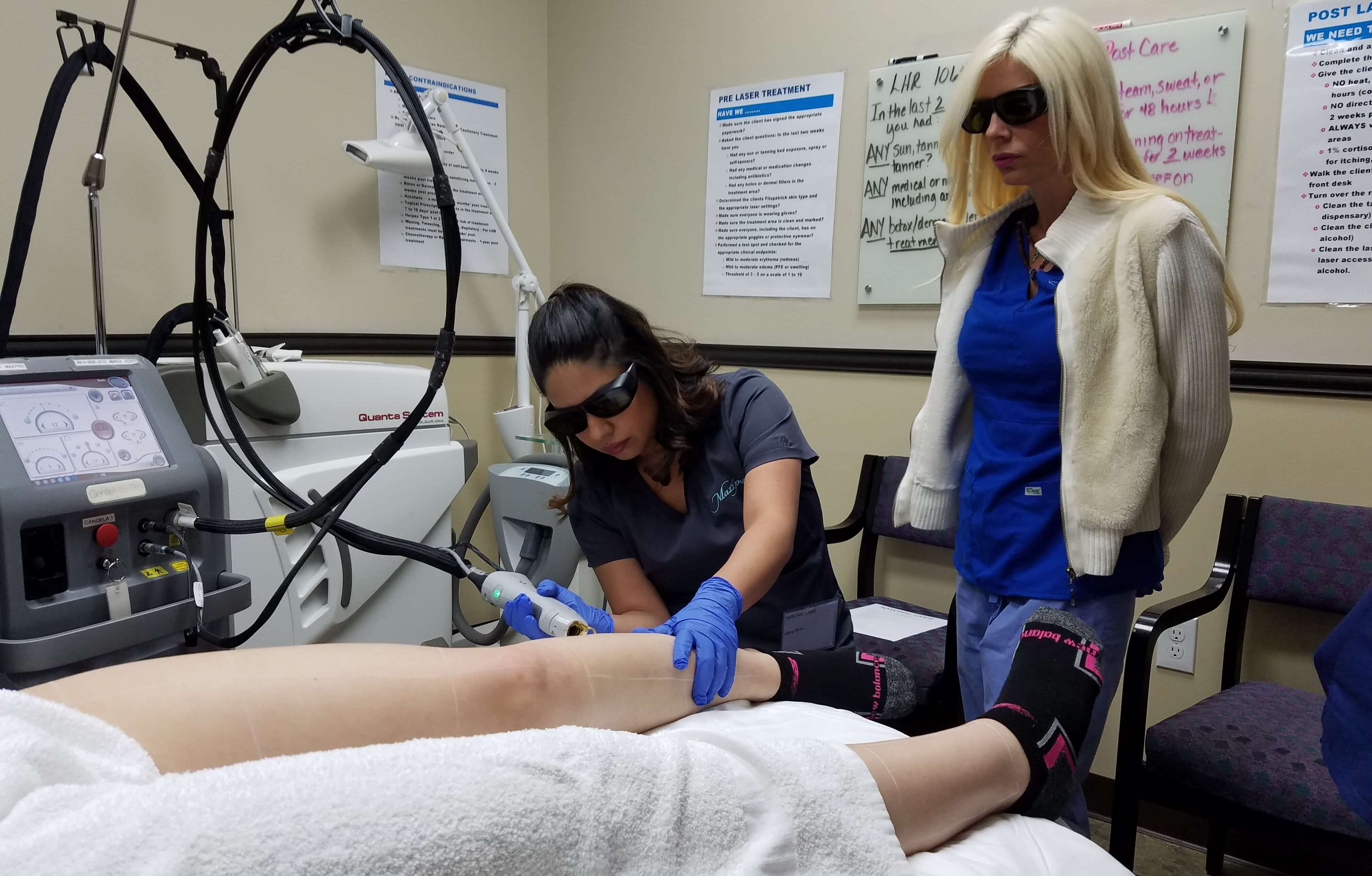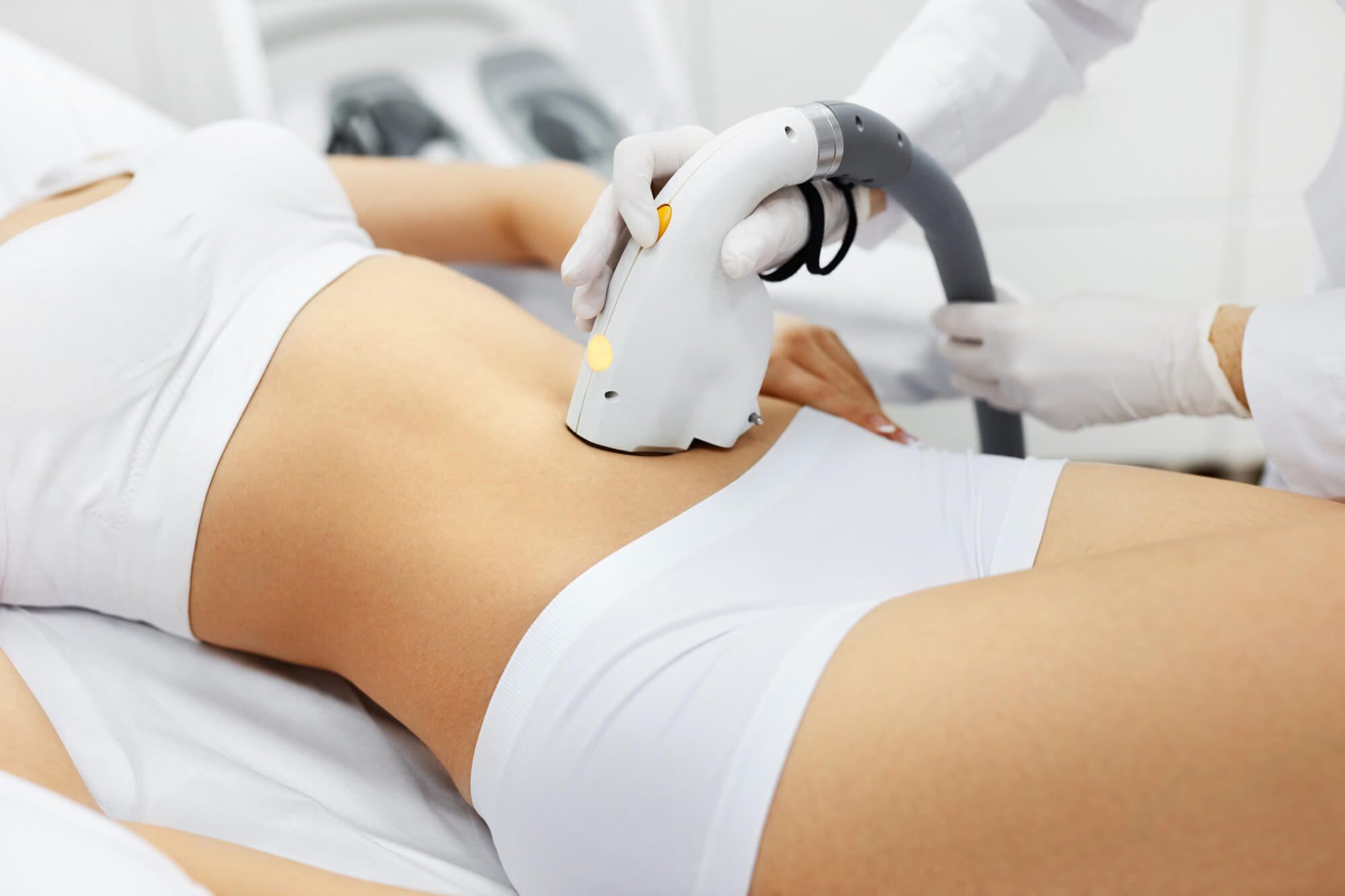Home>How-to Guides>For Women>How To Prepare Before Laser Hair Removal


For Women
How To Prepare Before Laser Hair Removal
Modified: August 5, 2023
Prepare yourself for laser hair removal by following these steps specifically designed for women. Achieve smooth and hair-free skin with this comprehensive guide.
(Many of the links in this article redirect to a specific reviewed product. Your purchase of these products through affiliate links helps to generate commission for Under-tec.com, at no extra cost. Learn more)
Table of Contents
Introduction
Welcome to the world of laser hair removal, where the days of endless shaving, painful waxing, and irritating depilatory creams are in the rearview mirror. With advancements in technology, laser hair removal has become a popular and effective solution for long-term hair reduction and smooth, flawless skin. But before you embark on your laser hair removal journey, it’s essential to understand the process, find a reputable professional, and prepare yourself for the treatment.
Laser hair removal is a cosmetic procedure that uses concentrated beams of light to selectively target the pigment in hair follicles. The laser energy is absorbed, damaging the follicle and inhibiting future hair growth. This method is ideal for various areas of the body, including the face, bikini line, legs, arms, and underarms.
When it comes to laser hair removal, choosing a skilled and experienced professional is crucial. Look for a licensed aesthetician or a certified laser technician who specializes in laser hair removal. Do thorough research, read reviews, and ask for recommendations to ensure you find a reputable and trustworthy practitioner who prioritizes your safety and comfort.
Once you’ve found the right professional, your journey begins with a consultation and patch test. During the consultation, you’ll discuss your hair removal goals, medical history, and any concerns you may have. The patch test involves treating a small area of skin to see how it reacts to the laser. This step is crucial to determine the appropriate laser settings for your skin type and hair color, as well as to test for any skin reactions or allergies.
Before your laser hair removal session, you’ll need to prepare your skin properly. It’s recommended to avoid sun exposure and tanning beds for at least four weeks prior to your appointment. Tanned or sunburned skin is more prone to side effects such as burns and pigmentation changes. Additionally, avoid using self-tanning products as they can interfere with the laser’s ability to target the hair follicles accurately.
Understanding Laser Hair Removal
Laser hair removal is a popular cosmetic procedure designed to reduce and eliminate unwanted hair from various areas of the body. It works by targeting the pigment within the hair follicles, delivering controlled pulses of laser energy that effectively damage and inhibit future hair growth.
The treatment is suitable for both men and women, and it can be performed on areas such as the face, bikini line, legs, arms, underarms, and more. Laser hair removal offers numerous benefits compared to traditional hair removal methods such as shaving, waxing, and depilatory creams. These benefits include longer-lasting results, reduced hair thickness and density, and smoother, silkier skin.
During the laser hair removal process, the specialized laser device emits a concentrated beam of light that is attracted to the pigment (melanin) in the hair follicles. The laser energy is absorbed by the melanin, generating heat that damages the follicles and impedes future hair growth. It is important to note that laser hair removal is most effective on darker hair because the laser targets the contrast between the hair and the skin.
While laser hair removal offers remarkable results, it is important to understand that multiple sessions are required to achieve optimal outcomes. Hair growth occurs in cycles, and laser hair removal is most effective during the anagen phase, which is the active growth phase of the hair follicle. Not all follicles are in this phase at the same time, which is why multiple treatments are necessary to target each follicle during its growth phase.
The length of the treatment sessions can vary depending on the size of the treatment area. Smaller areas such as the upper lip or underarms may only take a few minutes, while larger areas like the legs or back may require up to an hour. The procedure is generally well-tolerated, with most individuals experiencing only minimal discomfort, often described as a mild stinging sensation or rubber band snap.
It is important to note that laser hair removal is a medical procedure that should be performed by a trained and experienced professional. A reputable provider will evaluate your skin and hair type, customize the treatment settings accordingly, and ensure your safety throughout the process. By choosing a qualified professional, you can minimize the risk of complications and achieve the best possible outcomes.
Choosing a Professional
When it comes to laser hair removal, finding a reputable and experienced professional is crucial for a safe and effective treatment. With the increasing popularity of this procedure, it’s important to do your research and choose a qualified practitioner who specializes in laser hair removal.
First and foremost, look for a licensed aesthetician or a certified laser technician who has received proper training and certification in laser hair removal. Check their credentials and inquire about their experience working with different skin types and hair colors. A skilled professional will have extensive knowledge of the laser devices and settings to ensure optimal results while prioritizing your safety.
Word of mouth can be a powerful tool when it comes to finding the right professional. Ask your friends, family, or colleagues if they have undergone laser hair removal and if they can recommend someone. Personal recommendations can provide valuable insight into the practitioner’s expertise, professionalism, and the overall treatment experience.
Online reviews and testimonials can also be a helpful resource in your search for the right professional. Read reviews from previous clients to get an idea of their satisfaction levels and any potential issues that may have arisen. Look for positive feedback about the results achieved, the practitioner’s expertise, and their ability to ensure a comfortable and safe treatment process.
When narrowing down your options, schedule consultations with potential practitioners. This will allow you to meet them in person, discuss your hair removal goals, and ask any questions you may have. Use this opportunity to assess their level of professionalism, knowledge, and communication skills. A reputable professional will listen attentively, address your concerns, and provide clear explanations about the procedure, expected outcomes, and potential risks.
During the consultation, the practitioner should also evaluate your skin type and hair color to determine the most suitable laser settings for your specific needs. They should take the time to explain the limitations of laser hair removal based on your unique characteristics, ensuring realistic expectations about the results and the number of sessions required for optimal outcomes.
Lastly, consider the overall atmosphere and cleanliness of the facility. A reputable professional will prioritize cleanliness, using sterilized equipment and maintaining a clean and hygienic treatment room. Pay attention to the level of comfort and professionalism you feel during your consultation, as this will be indicative of the quality of care you can expect throughout your laser hair removal journey.
Consultation and Patch Test
Before beginning your laser hair removal treatment, it is essential to have a thorough consultation with your chosen professional. This consultation serves multiple purposes: to evaluate your suitability for the treatment, discuss your goals and expectations, and conduct a patch test to determine the most effective settings for your skin type and hair color.
During the consultation, your practitioner will assess your medical history, skin type, hair color, and any existing skin conditions. It is vital to provide accurate and complete information to ensure your safety and the success of the treatment. Certain medical conditions, medications, or skin sensitivities may affect the suitability of laser hair removal, so it is crucial to disclose this information during the consultation.
The patch test is an important step in your laser hair removal journey. It involves treating a small area of skin with the laser to observe how your skin reacts and determine the appropriate laser settings for you. This test helps to ensure that the treatment is not only effective but also safe for your specific skin type.
The patch test starts with the application of a cooling gel or numbing cream to the test area. Then, a small section of hair in the treatment area will be treated with the laser. You may feel a slight sensation during the test, similar to the actual treatment experience, which helps you understand what to expect during the full sessions.
After the patch test, your practitioner will monitor the test area for any adverse reactions. They will assess your skin’s response, looking for signs of redness, swelling, or irritation. This observation period typically lasts for 24 to 48 hours.
The patch test serves as a safety measure to identify any potential adverse reactions to the laser treatment. It also allows your practitioner to determine the appropriate laser settings for your specific needs, ensuring optimal results and minimizing the risk of complications. It is important to note that if you experience any significant discomfort, prolonged redness, or other adverse reactions during the patch test, you should notify your practitioner immediately.
During the consultation and patch test, take the opportunity to address any questions or concerns you may have. Your practitioner will guide you through the treatment process, discussing the expected number of sessions, intervals between treatments, and any necessary pre- and post-treatment care instructions.
Remember that the consultation and patch test are crucial steps in your laser hair removal journey. They allow both you and your practitioner to establish a strong foundation of communication and ensure a tailored treatment plan that aligns with your goals and expectations.
Preparing Your Skin
Preparing your skin properly before your laser hair removal treatment can help ensure the best possible results and minimize any potential risks or complications. By following a few simple guidelines, you can optimize the effectiveness of the treatment and enhance your overall experience.
One of the most important preparation steps is to avoid sun exposure and tanning beds for at least four weeks prior to your laser hair removal session. Tanned or sunburned skin is more susceptible to side effects such as burns, blisters, and pigmentation changes. It is essential to protect your skin from the sun’s harmful rays by wearing protective clothing, using sunscreen with high SPF, and seeking shade whenever possible. If your skin is tanned, it is recommended to wait until the tan fades before undergoing laser hair removal.
In addition to avoiding sun exposure, it is crucial to avoid using self-tanning products before your treatment. These products can interfere with the laser’s ability to accurately target the hair follicles, reducing the effectiveness of the treatment. It is best to refrain from applying self-tanners for at least two weeks before your session.
On the day of your laser hair removal appointment, make sure to arrive with clean, freshly washed skin. Remove any lotions, oils, perfumes, or deodorants from the treatment area. These products can create a barrier between the laser and the hair follicles, reducing the effectiveness of the treatment. Clean skin ensures that the laser energy penetrates the hair follicles more efficiently, leading to better results.
Prior to your treatment, it is important to shave the treatment area. Shaving removes the visible hair from the surface, ensuring that the laser energy is targeted directly at the hair follicles beneath the skin. It is recommended to shave the treatment area 24 to 48 hours before your session to allow any potential irritation to subside. Avoid waxing, plucking, or bleaching the hair as these methods remove or alter the hair follicles, making laser hair removal less effective.
Lastly, being well-hydrated and maintaining healthy skin can further enhance the effectiveness of laser hair removal. Drink plenty of water leading up to your appointment to ensure your skin is hydrated from the inside out. Additionally, follow a skincare routine that includes gentle cleansing and moisturizing to keep your skin in optimal condition. Well-hydrated and healthy skin can improve the absorption of laser energy by the hair follicles and promote faster healing post-treatment.
By preparing your skin according to these guidelines, you can maximize the benefits of your laser hair removal treatment. Follow these steps, consult with your practitioner, and adhere to any specific pre-treatment instructions they provide to ensure a smooth and successful procedure.
Avoiding Sun Exposure
When preparing for laser hair removal treatment, it is crucial to avoid sun exposure to ensure the safety and effectiveness of the procedure. Sun exposure can have detrimental effects on the skin and increase the risk of complications during the treatment process. By taking specific precautions, you can optimize the results of your laser hair removal sessions.
Sun exposure before laser hair removal can cause a variety of issues, including burns, blisters, and uneven skin pigmentation. The sun’s harmful UV rays can make your skin more sensitive and prone to damage. Tanned or sunburned skin contains more melanin, the pigment targeted by the laser, which can lead to an increased risk of side effects.
It is recommended to avoid direct sun exposure and tanning beds for at least four weeks prior to your laser hair removal session. This includes sunbathing, using tanning beds, and spending long hours outdoors without protection. Even on cloudy or overcast days, your skin is still susceptible to UV radiation, so it is crucial to exercise caution and protect your skin.
Protecting your skin from the sun’s harmful rays is key during the preparation phase. Wear protective clothing, such as wide-brimmed hats, long-sleeved shirts, and pants, to shield your skin from direct sunlight. Apply a broad-spectrum sunscreen with a high SPF (30 or higher) generously on any exposed areas of skin. Reapply sunscreen every two hours or more frequently if you are sweating or swimming to maintain optimal protection.
If you happen to get a sunburn or develop a tan prior to your scheduled laser hair removal session, it is essential to reschedule your appointment. Treating sunburned or tanned skin with lasers can lead to adverse effects such as burns, blistering, and pigmentation changes. Allow your skin to recover fully before undergoing laser treatments to ensure the best possible outcomes.
Post-treatment, it is equally important to continue protecting your skin from the sun. Your skin may be more sensitive after laser hair removal, and exposure to the sun without proper protection can increase the risk of complications and hinder the healing process. Apply sunscreen daily, even on cloudy days, and limit your time outdoors during peak sun hours.
By avoiding sun exposure before and after laser hair removal, you can minimize the risk of adverse effects and optimize the effectiveness of the treatment. Protecting your skin from the sun not only ensures safer treatment sessions but also helps maintain the health and appearance of your skin in the long run. Consult with your laser hair removal practitioner for specific instructions tailored to your skin type and treatment plan.
Avoiding Certain Medications
When preparing for laser hair removal, it is important to be mindful of the medications you are taking. Some medications can increase the risk of complications or adverse reactions during the treatment process. To ensure a safe and effective procedure, it is crucial to avoid certain medications that may interfere with the laser’s performance or affect the skin’s response to treatment.
First and foremost, it is important to disclose all medications you are currently taking to your laser hair removal practitioner during your consultation. This includes prescription medications, over-the-counter medications, and herbal supplements. Providing a complete list allows your practitioner to assess any potential risks and adjust the treatment plan accordingly.
One category of medications to avoid before laser hair removal is photosensitizing drugs. These medications can increase the skin’s sensitivity to light and may lead to increased risk of burns, blistering, and other adverse reactions. Examples of common photosensitizing medications include certain antibiotics (such as tetracyclines), nonsteroidal anti-inflammatory drugs (NSAIDs), diuretics, and some acne medications. It is crucial to consult with your prescribing physician and your laser hair removal practitioner to determine the appropriate time to discontinue these medications before undergoing treatment.
Similarly, medications that thin the blood or interfere with blood clotting should be avoided prior to laser hair removal. These medications include anticoagulants like warfarin, clopidogrel, and aspirin. Thinning the blood can increase the risk of bruising and bleeding during the treatment process. It is essential to consult with your healthcare provider before discontinuing or adjusting any prescribed medications.
Additionally, medications that increase the sensitivity of the skin, such as retinoids and topical acne treatments, should be avoided before laser hair removal. These medications can cause skin irritation and make the skin more susceptible to side effects like burns and blistering. It is recommended to stop using these products at least one week prior to your treatment session.
Remember to consult with both your laser hair removal practitioner and your prescribing physician before making any changes to your medication routine. They can provide guidance specific to your situation and ensure a safe and effective treatment process.
By avoiding certain medications before your laser hair removal sessions, you can reduce the risk of complications and maximize the benefits of the treatment. Open and honest communication with your practitioner, along with careful consideration of your medication history, will contribute to a successful and satisfactory laser hair removal experience.
Shaving the Treatment Area
When preparing for laser hair removal, it is essential to properly shave the treatment area before your appointment. Shaving ensures that the laser can effectively target the hair follicles beneath the skin, maximizing the efficiency and safety of the treatment. It is important to follow specific guidelines to achieve the best possible results.
Before your laser hair removal session, it is recommended to shave the treatment area 24 to 48 hours beforehand. Shaving removes the visible hair above the skin’s surface while leaving the hair follicles intact. By doing so, the laser energy can directly target the hair follicles, leading to better outcomes.
Using a clean and sharp razor, shave the treatment area in the direction of hair growth. This helps to minimize skin irritation and ensures a close shave. Avoid pressing down too hard or rushing through the process, as this may result in nicks or cuts. Take your time and pay attention to detail to achieve a smooth and even shave.
It is important not to wax, pluck, or use depilatory creams on the treatment area before laser hair removal. These methods remove or disturb the hair follicles, making it difficult for the laser to effectively target them. Shaving, on the other hand, preserves the hair follicles while removing the visible hair shaft, making it the ideal method of hair removal before laser treatment.
By shaving the treatment area prior to your appointment, you can ensure that the laser energy is focused on the hair follicles, rather than the hair above the skin’s surface. This allows the laser to effectively heat and disable the follicles, leading to long-lasting hair reduction.
It is important to note that shaving does not stimulate hair growth or make the hair grow back thicker or darker. This is a common myth associated with shaving. Laser hair removal targets the hair follicles beneath the surface of the skin, not the visible hair itself.
After shaving, it is recommended to gently exfoliate the treatment area a day or two before your session. Exfoliation helps to remove dead skin cells and any debris that may be present, allowing the laser energy to penetrate the skin more effectively.
Remember, always discuss and follow the specific instructions given by your laser hair removal practitioner. They may have additional guidelines or recommendations based on your unique circumstances and treatment plan.
By properly shaving the treatment area before your laser hair removal session, you can optimize the results and ensure a smooth and effective treatment experience. Follow these guidelines, communicate with your practitioner, and embrace the journey towards reduced hair growth and smoother skin.
Arriving Clean and Makeup-Free
When attending your laser hair removal appointment, it is important to arrive with clean, freshly washed skin and a makeup-free face. This ensures optimal results and allows the laser to effectively target the hair follicles. By following this guideline, you can enhance the efficiency and safety of the treatment.
Before your laser hair removal session, cleanse your skin thoroughly with a gentle cleanser. This helps to remove any dirt, oil, or cosmetics that may be present on the surface of the skin. Cleansing the skin also helps to minimize the risk of bacterial infection and allows the laser to penetrate the skin more effectively.
If you normally wear makeup, it is essential to remove it before your appointment. Many cosmetics contain ingredients that can interfere with the laser’s performance and potentially cause adverse reactions. Makeup can create a barrier on the skin’s surface, preventing the laser energy from reaching the hair follicles accurately. By arriving with a clean and makeup-free face, you allow the laser to target the hair follicles directly, resulting in more successful treatment outcomes.
It is recommended to avoid using any skincare products, such as creams, lotions, or serums, on the treatment area on the day of your laser hair removal session. These products can leave residues or create a barrier that can affect the laser’s efficiency. Your practitioner will provide specific instructions regarding skincare product usage before and after the treatment, so make sure to follow their guidance.
By arriving with clean skin and no makeup, you ensure a hygienic and successful laser hair removal session. The laser technician can focus on targeting the hair follicles without any obstructions or interference. This allows for a more efficient and precise treatment process, leading to better long-term hair reduction results.
Keep in mind that each laser hair removal session builds upon the previous ones, so it is important to maintain consistency in your preparation and adhere to the guidelines provided by your practitioner. By arriving clean and makeup-free, you create an ideal foundation for a successful treatment and move closer to achieving your desired outcome of smooth, hair-free skin.
Following Pre-Treatment Guidelines
Before your laser hair removal session, it is important to follow the pre-treatment guidelines provided by your practitioner. These guidelines are designed to ensure the safety and effectiveness of the procedure and to optimize the results of your treatment. By following these guidelines, you can prepare yourself both physically and mentally for the laser hair removal process.
One of the common pre-treatment guidelines is to avoid excessive sun exposure and tanning beds for at least four weeks prior to your session. Tanned or sunburned skin is more susceptible to side effects such as burns, blistering, and pigmentation changes. Protect your skin from the sun’s harmful rays by wearing protective clothing and using sunscreen with a high SPF. Sun avoidance helps to reduce the risk of complications during and after the laser hair removal treatment.
Another important guideline is to avoid using any hair removal methods that remove the hair from the root, such as waxing, plucking, or using depilatory creams, in the treatment area for at least four weeks prior to your appointment. These methods remove the hair follicles, which are the target of the laser, and can interfere with the effectiveness of the treatment. Shaving is typically the recommended method of hair removal during this timeframe, as it preserves the hair follicles while removing the visible hair.
It is also crucial to avoid using any topical products on the treatment area on the day of your appointment. This includes creams, lotions, perfumes, deodorants, and makeup. These products can interfere with the laser’s ability to penetrate the skin and accurately target the hair follicles. Arrive at your appointment with clean, freshly washed skin, free from any residues or barriers that may impede the laser treatment.
If you have any concerns or questions before your laser hair removal session, make sure to reach out to your practitioner. They will provide you with specific pre-treatment instructions based on your skin type, hair color, and medical history. Following these guidelines ensures that you are well-prepared for the procedure and helps to optimize the results of your laser hair removal treatment.
By diligently following the pre-treatment guidelines provided by your practitioner, you can enhance the safety, effectiveness, and overall experience of your laser hair removal sessions. Remember to communicate openly with your practitioner, adhere to their instructions, and maintain consistency throughout your treatment journey. This will contribute to achieving the best possible outcomes and enjoying the benefits of smooth, hair-free skin.
Conclusion
Laser hair removal provides a long-term solution for removing unwanted hair and achieving smooth, flawless skin. By understanding the process, choosing a qualified professional, and following the necessary preparations, you can optimize the safety and effectiveness of your treatment.
Start by gaining a clear understanding of how laser hair removal works and its benefits. Engage in thorough research to find a reputable professional who specializes in laser hair removal. Consult with your chosen practitioner, undergo a patch test, and discuss your goals and expectations for the treatment.
Preparing your skin is essential before laser hair removal. Avoid sun exposure and tanning beds, as well as certain medications that can increase the risk of complications or interfere with the treatment. Shave the treatment area, arrive with clean, makeup-free skin, and follow any specific pre-treatment guidelines provided by your practitioner.
Remember to respect the guidelines and advice given by your laser hair removal practitioner. Each session builds upon the previous ones, and consistency is key to achieving long-lasting results. Follow post-treatment instructions, protect your skin from the sun, and maintain a skincare routine that supports healthy, rejuvenated skin.
By embracing these recommendations, you can navigate your laser hair removal journey successfully. Experience the freedom from constant shaving or waxing, and savor the confidence that comes with smooth, hair-free skin. Consult with a reputable professional, take proactive steps to prepare yourself, and enjoy the benefits of this modern and effective method of hair removal.
